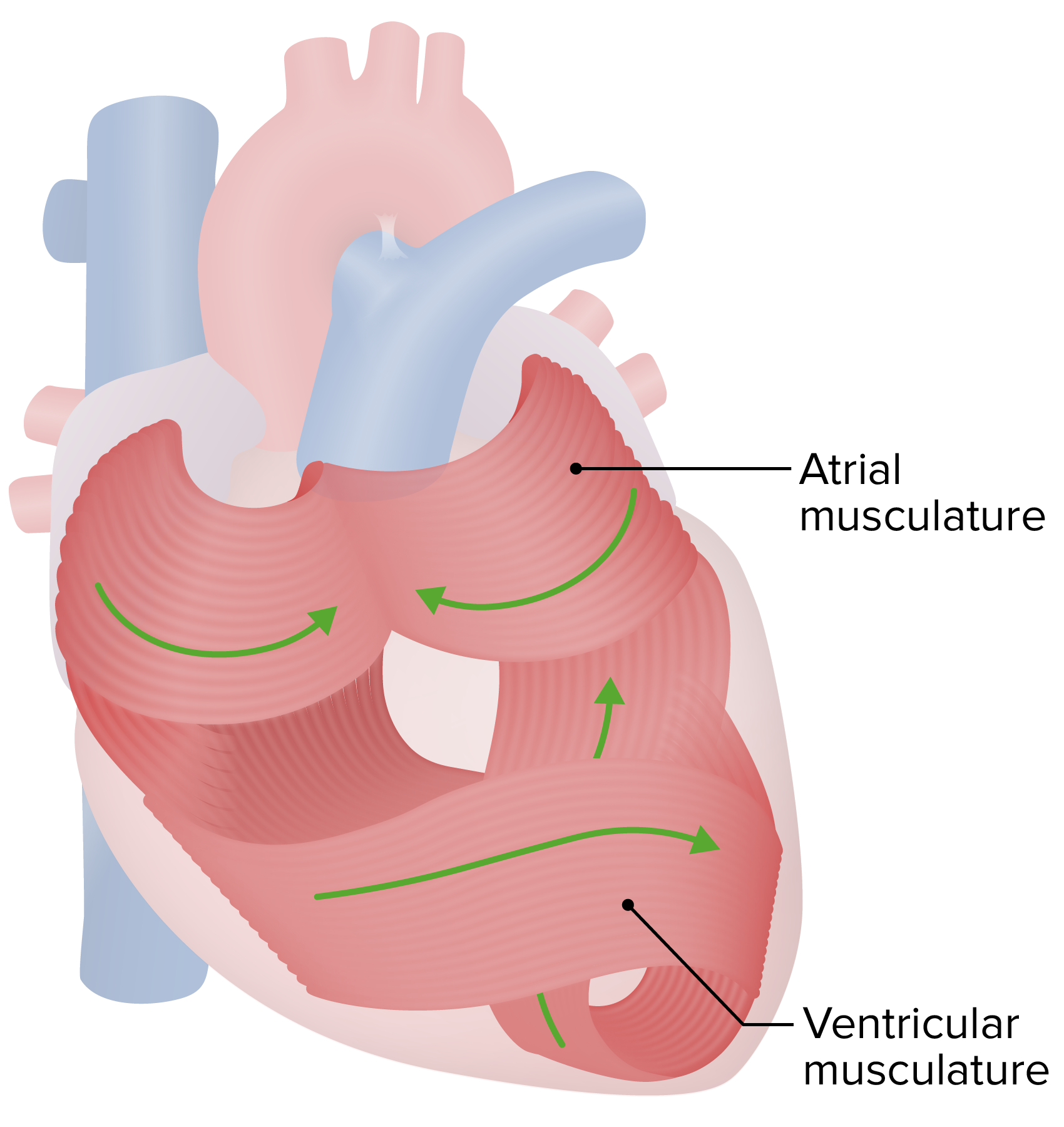Playlist
Show Playlist
Hide Playlist
Non-Pacemaker Action Potential – Heart Rate and Electricity
-
Slides Heart Rate and Electricity.pdf
-
Download Lecture Overview
00:01 So, now, we can look at a ventricular myocyte action potential. 00:07 So, this is not a pacemaker. 00:08 This is the ventricular myocytes, the ones that do all the work. 00:13 So, not the pacers, the ones that do the work. 00:16 All right. 00:17 So, here, we start off with what - I know it's the heart. 00:22 We started with four. 00:23 Why do we start with four? I don’t know. 00:25 We start off with four. 00:26 That’s how they’re always going to term it. 00:28 So, you have to know it. 00:29 They start with 4. 00:30 Four is resting membrane potential. 00:34 But notice, for a ventricular myocyte, the line is flat. 00:40 There's no spontaneity in phase 4. 00:45 Phase 4 is flat. 00:47 It doesn't slope up. 00:49 So, there's no way it's going to reach potential on its own. 00:52 It needs to be stimulated to cause an action potential. 00:56 What is it stimulated by? Well, pacemaker cells. 00:59 Pacemaker cells send that signal, propagate it down throughout the heart and that will cause the ventricular myocytes to want to contract or depolarize first. 01:09 Let's look at phase - the next phase. 01:12 If you have a signal via the gap junction that travels through and stimulates what? Fast sodium channels. 01:22 You get phase 0. 01:24 So, phase 0 is when the sodium rushes into the cell. 01:30 Note that phase 0 is steep. 01:33 It’s fast. 01:35 A lot of sodium travels through. 01:38 Now, that is different than phase 0 in the pacemaker cell. 01:44 That was driven by calcium. 01:46 So, there's a difference between these two cells based upon which channels open. 01:52 So, phase 0 involves fast sodium channels, a little bit of calcium, and also there is this transient outward potassium current. 02:03 And that’s that little blip you see at the top. 02:06 The prolonged portion is governed by calcium. 02:11 So, this is a calcium current that travels for a longer period of time. 02:16 That is what phase 2 is. 02:19 Phase 3 involves that repolarization, that delayed potassium response, and that brings membrane potential back down to phase 4. 02:31 So, it is in a ventricular myocyte that we actually get to use all the numbers, right? We use 4, then we use 0, then 1 and 2, then 3, then back to 4 again. 02:42 So, you didn't think we were going to skip numbers, did you? We didn't. 02:46 We just had to get them by bringing up the ventricular myocyte action potential. 02:53 Time ones again, the link those currents with the associated channel in the myocyte action potential. 03:00 Here we're gonna go all the way from phase 4 through 0, 1, 2 and 3. 03:07 The most important channel to link up with its associated current, is the voltage-gated sodium channel. 03:15 This is our primary item that it's engaged during threshold or phase 0, and then it's deactivated during phase 1. 03:24 Its scientitic name is NAV 1.5. 03:28 Now, besides this sodium channel, we have a couple of potassium channels to deal with. 03:34 The first one are these fast-acting voltage-gated potassium channels. 03:40 And these are really only inacted during phase 1, these are very -- in doing that transient potassium current. 03:48 The L-type calcium channel, also very important during the cardiac myocyte, here, the L-type calcium channel or the CAV 1.2, are activated during phase 1, phase 2, and are deactivated during phase 3. 04:05 They're most associated with the plateau portion of phase 2. 04:10 And our final current to channel correlation that we need to make sure we bring out here, is our delayed potassium channels. 04:19 These ones are activated primarily during phase 3 to bring membrane potential down closer to baseline, and then finally also, during the phase 4, they are active.
About the Lecture
The lecture Non-Pacemaker Action Potential – Heart Rate and Electricity by Thad Wilson, PhD is from the course Cardiac Physiology.
Included Quiz Questions
The conductance of which ion results in phase 2 characteristics in a ventricular myocyte action potential?
- Calcium
- Sodium
- Potassium
- Chloride
- Magnesium
Which of the following non-pacemaker action potential phases involves fast sodium channels?
- Phase 0
- Phase 1
- Phase 3
- Phase 2
- Phase 4
Which of the following phases of the non-pacemaker action potential involves an influx of calcium?
- Phase 2
- Phase 4
- Phase 3
- Phase 5
- Phase 1
Customer reviews
5,0 of 5 stars
| 5 Stars |
|
2 |
| 4 Stars |
|
0 |
| 3 Stars |
|
0 |
| 2 Stars |
|
0 |
| 1 Star |
|
0 |
Thank you, Professor Thad, for such a fantastic lecture, I am watching your lectures and I am loving cardiology
I loved your enthusiasm in this lecture series. Thank you for making this fun




